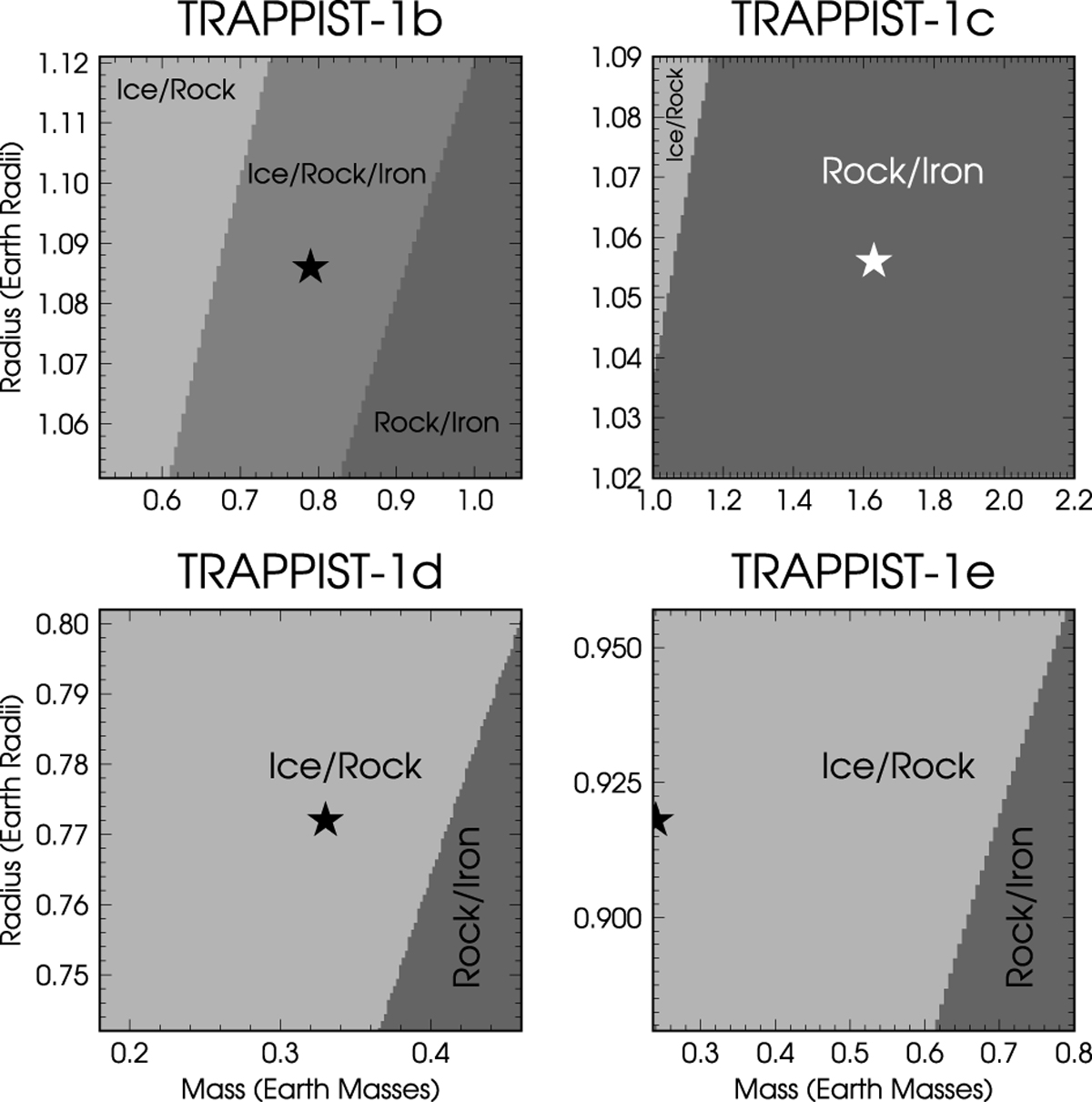Fig. 4

Boundaries between ice/rock, ice/rock/iron, and rock/iron compositions as a function of planetary mass and radius for the four innermost TRAPPIST-1 planets. Star indicates the location of the best-fit mass and radius from Wang et al. (2017). For TRAPPIST-1b (top left), gray regions show pairs of mass and radius for which the planet has a four-layer structure, similar to the “mean density” case illustrated in the top row in Fig. 3. For TRAPPIST-1c (top right), the vast majority of pairs of mass and radius values indicate a rock/iron composition. For planets d and e (bottom left and right), an ice/rock composition is most likely; structures completely devoid of H2 O are indicated only if each planet has a mass close to the highest permitted value and a radius close to the minimum permitted value.
Current usage metrics show cumulative count of Article Views (full-text article views including HTML views, PDF and ePub downloads, according to the available data) and Abstracts Views on Vision4Press platform.
Data correspond to usage on the plateform after 2015. The current usage metrics is available 48-96 hours after online publication and is updated daily on week days.
Initial download of the metrics may take a while.


